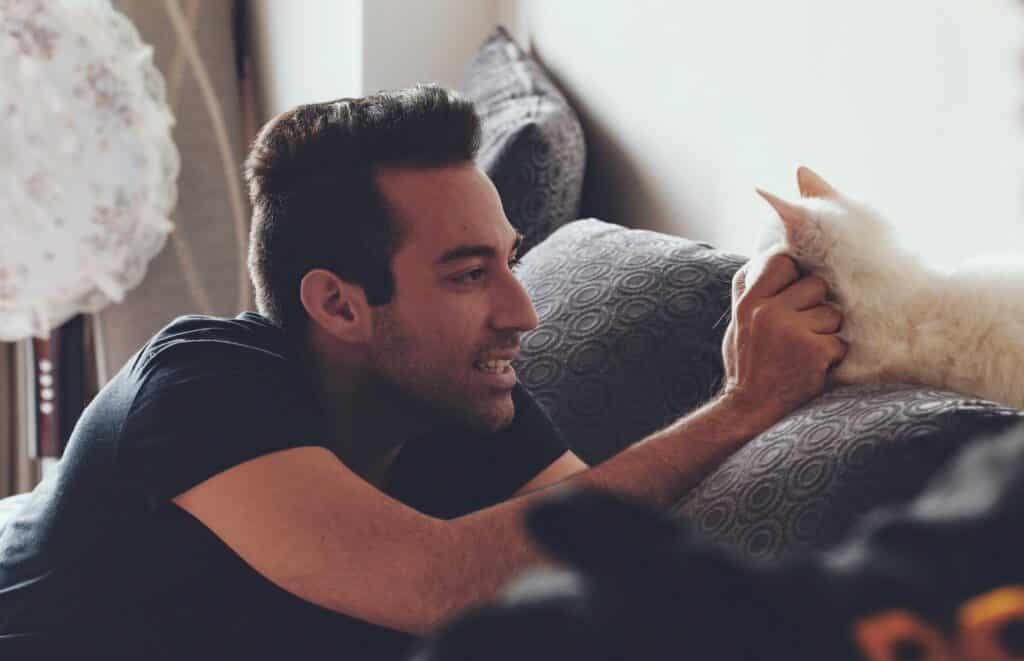If you’re planning an international move to Australia, there’s a lot you’ll need to do to prepare. Exploring your housing options is one of the most important steps.
To help make the process easier, our team here at Remitly created this comprehensive guide to finding and securing a rental property in Australia. In it, we’ll explore the rental process, give you tips on conducting a rental search and tell you what to expect when communicating with Australian landlords.
The benefits of renting in Australia
Rental properties are often a good option for temporary residents and immigrants who hope to become Australian citizens one day.
After residing in the country, new arrivals decide that another of the main cities in Australia is a better place for them to live, or they may find job opportunities in other Australian cities and need to move quickly. Choosing to rent in Australia instead of buying property provides the flexibility to relocate within the same city and beyond.
Opting to pay rent also frees those new to live in Australia from concerns about property maintenance and making any necessary repairs when problems arise. Not having the added responsibilities helps ease some of the stress of culture shock that those who have just moved internationally to a new city often experience.
Plus, renting an apartment in Australia will allow you to get to know the city. You can see what apartments and houses are like in the country and begin to envision your Australian dream home. While renting, you can then take the time to find a place to buy.
Key questions to ask before you start
Before you sign a rental agreement in Australia, take the time to assess your housing needs. Start by answering these questions.
Where do you want to live?
Brisbane? Sydney? Melbourne? Whether you are moving to attend a university, start a job, or be closer to family, Australia is full of beautiful cities and neighborhoods where you can start fresh.
What part of the city you should live in may need to be determined. To figure it out, consider:
- Where your school or office is, or where your family resides
- Whether you will be renting or buying a car or need to rely on public transportation
- What services will you need regularly? For example, does the quality of the public school system matter? Do you have a medical condition that will require frequent trips to the doctor?
- What type of neighbourhood do you want to live in – Family-friendly? Hip and artsy? Quiet? Full of nightlife opportunities?
If possible, talk to locals who live in the city where you’ll be renting. You can even post on social media to get advice from Aussies who know the area. Blogs and websites can also be good resources when choosing a neighborhood.
When do you need to move?

Do you need to be in Australia by a specific date? If so, you may need to look for short-term rentals that you can move into quickly. Then, you can research apartments and houses you can rent for longer once you’re in the country.
If you have more flexibility about timing when moving to Australia, you could do your entire search beforehand. However, you may want to find temporary accommodation like a hotel or Airbnb while looking for a place to rent more permanently. Opting for a short-term rental will allow you to tour properties and meet with an agent in person.
What is your budget for rent and utilities?
What rental prices can you afford to pay, including utilities and maintenance fees? Set a budget, so you can focus on apartments and houses in Australia that are within your means.
How much space and what type of space do you need?
Consider carefully how much room you’ll need in a rental property and whether you have any special requirements.
Can you make do with small studio flats, or do you need more than one bedroom to accommodate guests or family?
How important is having an outdoor space to you? Do you need an area that can function as a home office? Do you have any mobility issues that require accessibility modifications?
Make a list of must-haves and a secondary list of features that would be nice but aren’t deal breakers.
How to rent property in Australia step-by-step
To find and secure the perfect place to start the new chapter of your life in Australia.
Finding the right place to live
Thanks to the Internet, renting properties in Australia doesn’t require you to phone countless real estate agents or even visit the property before moving. You can start your search well before you even arrive in the country.
You can begin looking for rental properties in a few different ways.
One option is to find a reputable real estate agent in the town or city where you plan to live.
Using the services of real estate agents can simplify the rental process. The agent will ask you questions about your budget and needs and then match you with properties.
In addition, an agent will help you communicate with the Australian landlord to make negotiating and signing the tenancy agreement easier. They can also help you learn the local lingo you may encounter when discussing the legal aspects of renting.
If you decide to enlist a pro’s help, talk to a few different agents before choosing one. Ask about their specialties within the Australian rental market, and look for an agent with experience with rental properties in the area where you hope to live.
Another strategy is to use property portals that aggregate the rental property listings from different real estate agencies. Major examples include Realestate.com.au and Domain.
These sites make it easy to focus on the kind of property you’re after. You can filter your search by property type, number of rooms, price, and location so that you will be able to access relevant listings.
What’s more, both of these sites have dedicated sections for houseshares. This is handy since many immigrants to Australia will prefer to move in with other tenants to keep costs down and make new friends.
If you like the idea of sharing apartments with someone else, check out the Flatmates portal. This is a great site that specializes in connecting people who might be good matches.

Viewing the property
These days, many agents and property managers will let you view the condition of the property virtually using videoconferencing tools like Zoom or Skype. Virtual tours can certainly be a useful way to narrow down your shortlist of rental properties to some prime candidates, especially if you have yet to arrive in Australia.
Although it may be tempting to move forward and get the necessary documents ready at the end of a virtual tour, try to schedule an in-person inspection before you fill out an application form. Setting up inspection times and working out the logistics of seeing the place in person may take some time, but it’s the only way you can ensure the rental property lives up to expectations.
Another benefit of touring in person is the chance to make a good first impression with the Australian landlord or property owner. You can come across as trustworthy and responsible. You can stand out from other people who may be interested in the rental property, increasing your chances of landing the apartment.
Some of the factors you’ll want to double-check during the property inspection include:
- Whether any essential services like trash collection or utilities are included
- Whether there are additional maintenance costs and/or property manager fees in addition to rent
- How long the lease period is, and whether renewal is automatic
- Which items of furniture come with the property (it’s important to confirm this even if the property is listed as ‘furnished’)
- If the property has air conditioning, as summers can be very hot Down Under
- Whether tenants are permitted to make any superficial changes, such as painting the walls or putting up shelves
- Who you should contact in the event of an urgent issue, like a leak or a malfunctioning boiler
- Whether there are any special stipulations (for example, no pets allowed)
- Whether you need to notify utility companies about your move and which ones serve the building
Providing documentation
Once you’ve picked out a property you like, you must undergo the rental application process.
Landlords and property managers will have their own criteria for assessing the suitability of potential tenants and their own process for screening tenants. However, getting the following documentation ready can help you prepare to apply:
- Official photo IDs, like your passport and foreign driver’s license
- Evidence you can afford the rent payment, such as recent payslips and a bank statement. In some cases, you may need to provide several months of bank statements to show your average balance
- Proof of your employment in Australia, such as an employment contract or reference
- Evidence that you have permission from the Australian government to live in the country, such as a Visa
- Contact details for people who can provide personal references – ideally individuals who can be regarded as unbiased, such as an employer, previous landlord, university tutor, and so on
Agents also like to see information about your rental history. Since you’re moving to Australia, you obviously won’t have a rental history in the country, which can be an obstacle.
You can tackle this head-on in the cover letter attached to your application form. If relevant, explain your accommodation history and provide contact details for an agent or landlord in your home country. If you had good relationships with them, give the names and contact information of previous landlords.
The cover letter should be written formally and professionally, but feel free to talk about your background, why you’re moving to Australia, and why you’d love to live in the property. First-time renters can explain what their living arrangements were before.
Some real estate agents will process your rental application through an online platform that allows you to upload documentation like your bank statement. Others may be happy to do this by email. Have you sent a copy of your photo ID and other documents as attachments? Double-check so you’re clear on what’s required.
Remember that you may be asked to open a bank account in Australia before the process is complete so the property manager can debit your account.
Reviewing the agreement
When moving to Australia from abroad, you have a lot to do, and sorting through the lease agreement’s legal details may seem overwhelming. However, you should make time to review all the details of the agreement.
Knowing what you’re agreeing to when you sign your name in an agreement can help ensure you know your rights if a legal dispute arises. Be wary of real estate agents or landlords who pressure you to sign immediately without giving you time to read.
If you have questions about the details of the contract, ask for clarification. You may even want to show the contract to an attorney in Australia before you agree to rent a property.
Also, be sure to do a little research into the real estate market before you sign. Use the Internet to find the average rent for apartments or a house like the one you plan to rent. Doing so can help ensure you’re not paying more than the average Australian citizen for a similar property.
Paying your bond and first month’s rent

If your application to rent a property in Australia is accepted, you’ll be all set to sign the tenancy agreement and pay your security deposit (or bond) and some rent in advance. The amounts you can legally be expected to pay will depend on your exact rental situation and which Australian state you’re moving to.
For example, if you’re settling in Melbourne, which is in Victoria, you can be asked to pay a maximum of one month’s rent in advance unless the rent is paid every week, in which case you can only be expected to pay up to 14 days’ rent in advance.
As for the bond, you can only be asked to pay the equivalent of one month’s rent at most. However, no such caps apply to bonds and advance rental payments if the weekly cost of renting is $900 or above.
In most parts of the country, your bond must be lodged with a state-run authority, and you’ll be given a bond receipt. At the end of your tenancy, the landlord or property manager may want to deduct some of the bonds to cover damage to the property beyond the usual wear and tear or any other breach of the tenancy agreement. If there’s a dispute about an intended deduction, you can ask the state authority to investigate and resolve the disagreement.
As exact rules on payments and contact details for relevant authorities will differ from state to state, it’s important to do your homework and be clear on these finer details before signing the tenancy agreement. Once this is done, you’ll be ready to collect your keys and move into your new house or apartment.
Get ready to rent in Australia
No matter where you plan to live, start looking for apartments or other rental properties as early as possible. The more time you have to conduct your search, the more likely you will end up renting a place that truly fits your needs. And don’t forget to prepare yourself for your move.
Follow the steps outlined above to make renting in Australia as simple as possible. Although there is a lot to do, you can find the ideal apartment to call home if you take things step by step.
About Remitly
Remitly makes international money transfers faster, more transparent, and more affordable. Since 2011, over 5 million people have used our secure mobile app to send money with peace of mind.
Visit the homepage, download our app, or check out our Help Center to get started.

